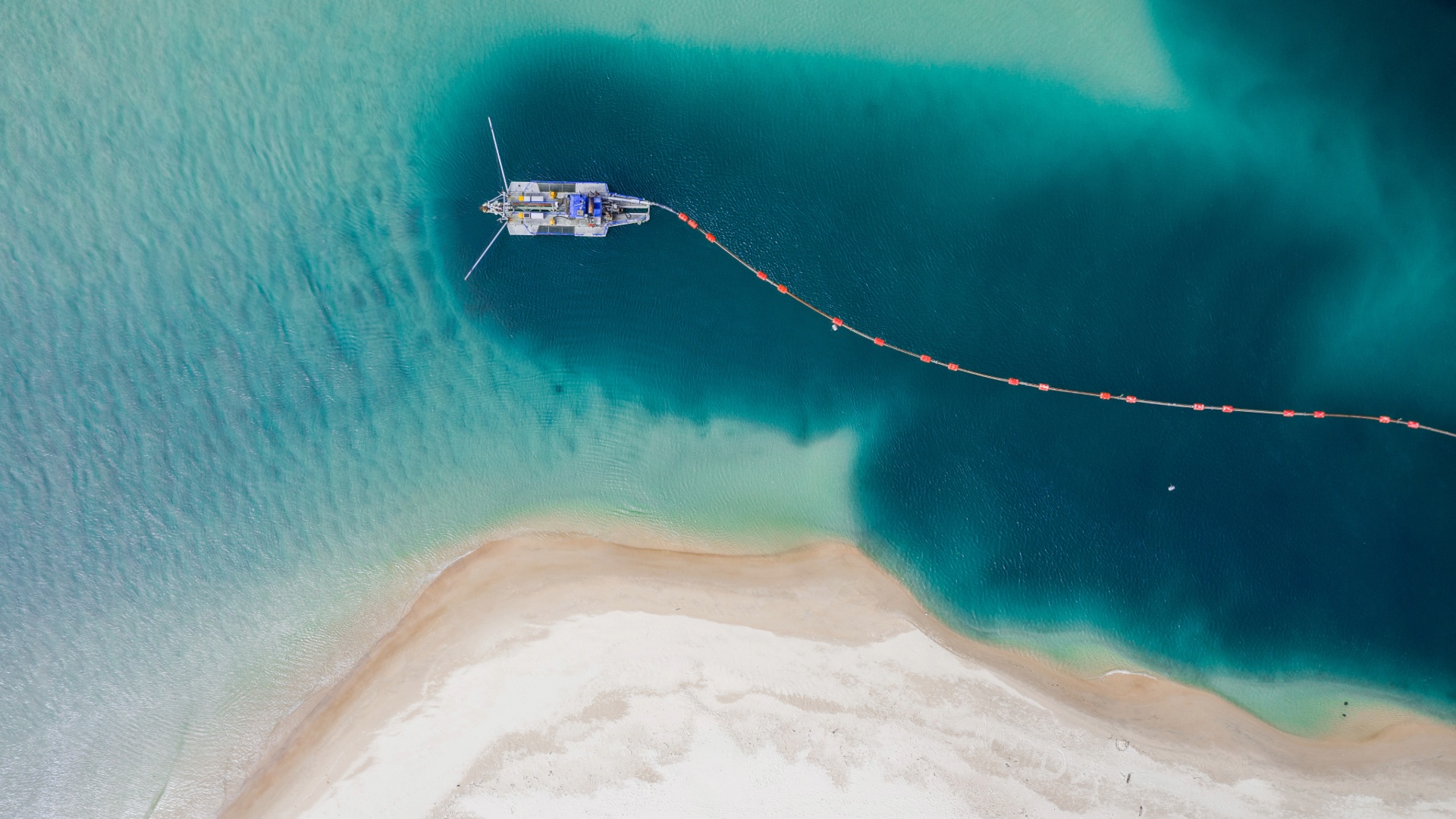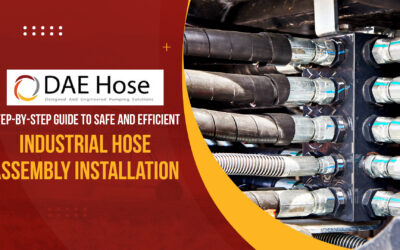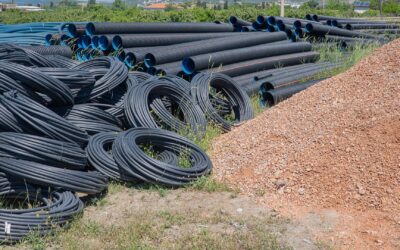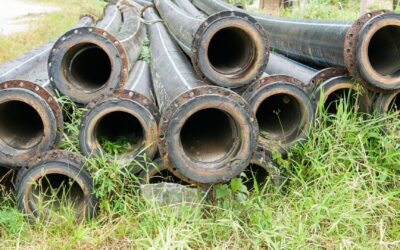In marine and dredging operations, the floating hose plays a vital role as the primary transport line for fluids such as slurry, seawater, and fuel. Unlike traditional hoses, it is engineered to remain buoyant on the water’s surface, enabling efficient transfer of materials over long distances in offshore and inland environments. This buoyancy is achieved through the use of floatation systems, which are securely attached to the hose body to prevent it from sinking, kinking, or becoming entangled beneath the water.
These hoses operate under harsh and unpredictable conditions—exposed to strong tidal currents, continuous UV radiation, mechanical strain, and biofouling from marine growth. Over time, such factors can lead to wear, degradation, and even catastrophic failure if regular inspection and maintenance are not performed. A failed floating hose not only halts operations but can also result in environmental hazards and significant repair costs.
To ensure long-term performance and safety, it is essential to implement a robust maintenance strategy. This comprehensive guide offers detailed insights into proven inspection techniques and best practices—developed by leading hose solution providers, such as DAE Hose—to extend the life of your hose system, including the buoyant supports commonly referred to as hose floats and industrial floats.
The Role of Floating Hoses in Marine and Dredging Operations
A floating hose is a specially engineered, heavy-duty hose designed to stay afloat on the water’s surface while transporting a wide range of fluids, including dredged material, oil, wastewater, and chemicals. These hoses are commonly used in critical marine and offshore applications such as port construction, beach nourishment, oil spill containment, mining discharge, and underwater pipeline connections.
The unique design of a floating hose enables it to function efficiently in dynamic aquatic environments. Its buoyancy is maintained by modular, lightweight hose floats, which are clamped along the hose at regular intervals. In more demanding or industrial applications, reinforced marine floats are used. These high-strength, load-bearing supports are built to endure extreme pressure, heavy fluid volumes, and rough sea conditions, ensuring enhanced structural integrity.
Floating hoses are essential for:
- Maintaining consistent and reliable fluid transport across water
- Resisting wave-induced motion and preventing kinks or dislocations
- Enabling flexible routing and deployment of pipeline systems in ever-changing marine conditions
Without the stabilizing features provided by hose floats and industrial hose floats, a floating hose would be at risk of sagging, sinking, or rupturing. This could lead to serious environmental hazards, costly downtime, and damage to marine equipment. Their role in operational continuity and environmental safety is therefore indispensable.
Common Causes of Floating Hose Failures
Understanding the most common causes of floating hose failures is crucial for implementing effective maintenance strategies and preventing costly downtime. While these systems are engineered to be highly durable in challenging marine conditions, several environmental and operational factors can contribute to premature degradation if not addressed through routine inspection and care.
Abrasion and Wear
A primary cause of damage to any marine hose is abrasion. During operations, hoses frequently come into contact with rough surfaces, including rocks, sharp debris, and mechanical equipment. This repeated friction gradually wears down the outer layer, weakening its structure. Over time, this can result in minor leaks or even total rupture, especially in high-pressure systems. Abrasion also affects the surface of buoyant supports, such as hose floats and their industrial-grade counterparts, reducing their performance.
UV Degradation
Prolonged exposure to sunlight, particularly UV radiation, can significantly degrade hose materials, making them brittle and prone to cracking. This is a serious issue in tropical and subtropical marine environments. UV rays also compromise the structural integrity of hose floats and industrial hose floats, causing them to fade, weaken, or lose buoyancy.
Marine Fouling
Marine organisms such as barnacles, algae, and mussels often attach themselves to submerged hose surfaces. This biofouling increases weight and drag, which may cause segments of the floating hose to dip below the waterline. When floatation units are fouled or overloaded, buoyancy is reduced, raising the risk of hose misalignment or failure.
Improper Handling and Storage
Many failures stem from poor handling practices. Using incorrect lifting equipment or dragging hoses over abrasive ground can cause internal kinks and external damage. Storing them in direct sunlight or without adequate support accelerates wear on both the hose and the associated industrial hose floats.
Weak or Damaged Floats
Floatation devices are critical to hose functionality. When floats become cracked, waterlogged, or detached, they lose their buoyant capabilities. This often leads to sagging or twisting, resulting in stress fractures or full submersion-ultimately disrupting operations.
By identifying these common failure modes early, operators can implement targeted maintenance actions to extend service life and ensure reliable hose performance in the most demanding environments.
Routine Maintenance Best Practices
To ensure the longevity and reliability of any floating hose system, it’s essential to implement a structured and consistent maintenance routine. Regular upkeep minimizes the risk of unexpected failures and ensures the effectiveness of buoyancy components, such as hose floats and industrial hose floats. The following best practices should be integrated into your operational procedures.
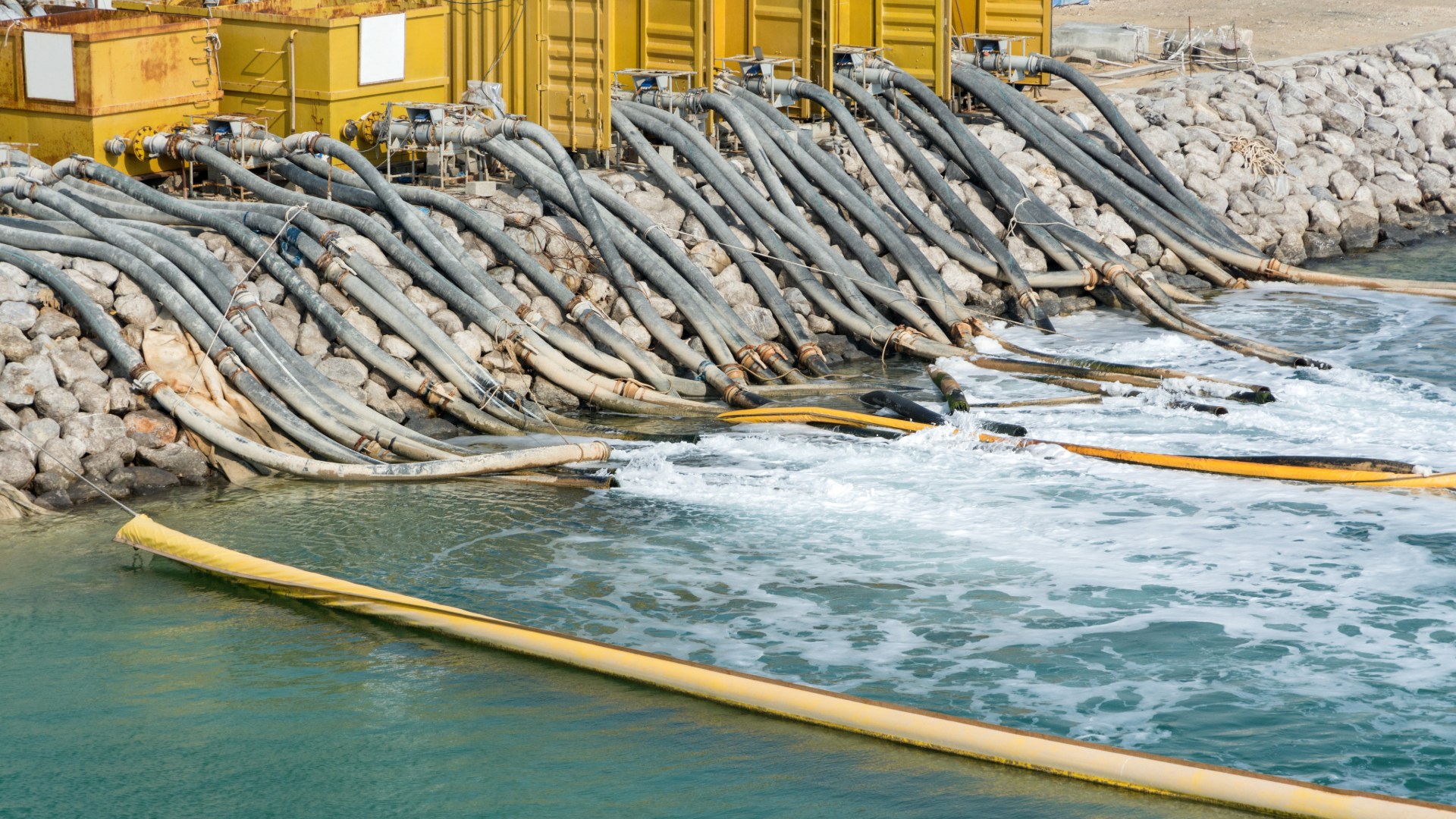
External Visual Inspection
Visual inspections serve as the first line of defense against deterioration. Conduct these checks routinely, especially before and after deployments:
- Look for abrasions, punctures, or bulging on the hose’s outer surface—these may indicate internal stress or impending failure.
- Assess hose floats for discoloration or brittleness due to sun exposure.
- Confirm that industrial hose floats are securely clamped and correctly positioned to maintain balance and support.
Pressure Testing and Internal Checks
Regular internal evaluations help verify structural strength and prevent hidden defects:
- Conduct hydrostatic pressure tests to ensure the hose withstands operational loads without deforming.
- Use borescopes or submersible cameras to check for inner wall damage or material buildup.
- Inspect all couplings and seals to detect corrosion, fatigue, or wear-especially in abrasive slurry or fuel transfer applications.
Cleaning and Anti-Fouling Measures
Marine systems attract fouling that can compromise performance if ignored:
- Rinse the exterior regularly to remove sediment, salt, and organic matter.
- Scrub the hose floats and industrial hose floats to remove marine growth that reduces buoyancy.
- Apply anti-fouling coatings to delay biofouling and reduce the frequency of cleaning.
Lubrication and Coupling Checks
Well-maintained joints and connections ensure leak-free, dependable performance:
- Apply marine lubricants to moving parts and couplings to prevent seizure.
- Replace aging or brittle gaskets to maintain pressure seals and ensure optimal performance.
- Re-torque all fasteners post-operation to prevent loosening under dynamic loads.
By maintaining a rigorous upkeep routine, operators can significantly extend the service life of the floating hose system. Attention to components like hose floats and industrial hose floats reduces downtime and enhances safe, efficient marine fluid transport.
Inspection Frequency and Scheduling
In demanding marine environments, routine inspections are critical to preserving the performance and reliability of your floating hose system. Identifying early signs of wear, stress, or floatation imbalance allows timely corrective action before minor issues evolve into operational failures. A disciplined inspection program ensures that both the floating hose and its buoyancy components remain in optimal condition.
Recommended Inspection Schedule
A structured, multi-tiered plan helps detect surface-level and internal problems across different intervals:
- Daily:
Conduct a quick visual scan of the hose and floats. Watch for kinks, sagging sections, or displaced buoyancy devices. Promptly realigning any loose or damaged floats helps avoid mechanical strain. - Weekly:
Perform a detailed visual inspection. Look for exterior abrasions, cracks, UV fading, or signs of wear. Ensure floatation supports are undamaged and firmly secured along the hose length. - Monthly:
Schedule internal assessments, such as pressure testing and borescope reviews. Check for sediment buildup, liner degradation, and any early signs of internal failure. - Quarterly:
Carry out a complete system inspection. This includes structural checks of the entire assembly and a close evaluation of support devices in high-stress areas. If feasible, inspect couplings, gaskets, and bolt torque.
Recordkeeping and Performance Tracking
Maintaining a detailed inspection log is essential for long-term asset management. Important information to capture includes:
- Date and time of inspection
- Name of inspecting personnel
- Noted wear patterns or mechanical damage
- Actions taken (repairs, float replacement, adjustments)
- Any observed patterns in equipment degradation
This data enables teams to identify trends, predict issues, and implement preventative measures. Early intervention through regular inspections minimizes system failure and extends the operational life of all components.
Replacing Worn-Out Components
Timely replacement of worn or damaged components is essential to maintaining the integrity and functionality of your floating hose system. When inspections or performance checks reveal diminished efficiency or physical damage, immediate corrective action can prevent critical failures.
When to Replace the Hose
Consider replacing the hose under the following conditions:
- Persistent fluid leaks or unexpected drops in pressure
- Deep cracks that breach beyond the outer layer
- Permanent distortion, flattening, or stiffness that hinders operation
These signs indicate the hose is no longer safe or effective for use.
Replacing Buoyancy Units
Floatation supports are crucial for keeping the hose in position. Replace any damaged units if you observe:
- Surface splitting, brittleness, or UV-induced wear
- Reduced buoyancy or signs of water infiltration
- Misshaped or misaligned floats affecting balance
A single compromised support unit can affect the entire system’s stability.
Upgrading to Industrial-Grade Options
For high-demand conditions, such as deeper waters or heavier discharge systems, upgrading to more durable flotation devices may be necessary. These robust alternatives provide:
- Enhanced support for larger or denser lines
- Resistance to corrosion and high-impact forces
- Improved performance in saltwater and turbulent conditions
Always ensure certified lifting gear and trained personnel are used for all replacement and upgrade procedures.
Enhancing Durability with Quality Components
The lifespan of a floating hose system can be significantly extended by choosing durable materials from the outset.
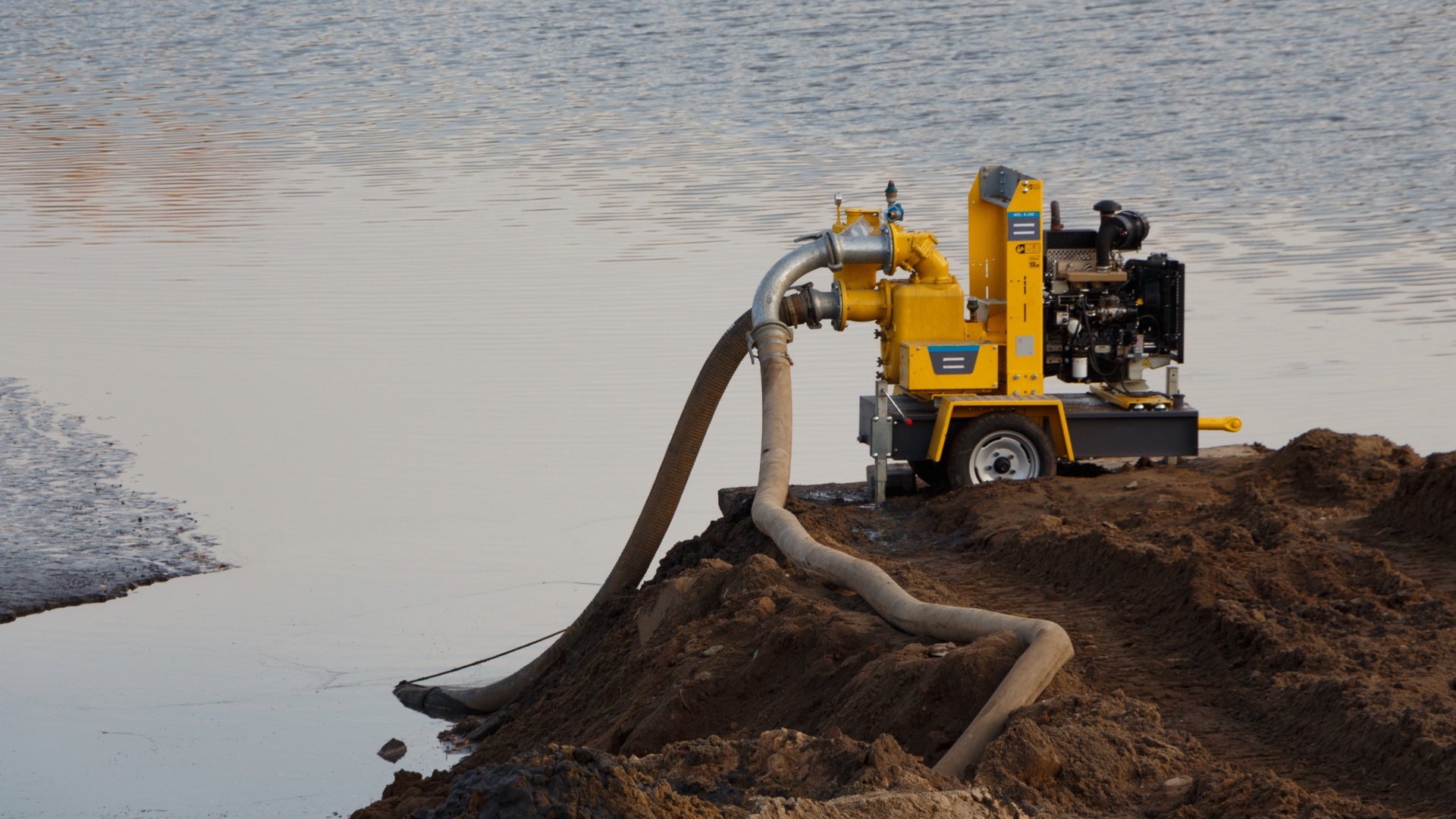
Hose Material:
- Opt for hoses made from reinforced synthetic rubber or thermoplastic elastomers for added flexibility and abrasion resistance.
Hose Floats:
- Use UV-resistant, closed-cell foam-filled hose floats that maintain buoyancy even when punctured.
- Check if they meet marine-grade standards.
Industrial Hose Floats:
- Choose rotomolded or cast polymer industrial hose floats for high-load applications.
- Look for models with internal rib structures for enhanced durability.
Utilizing high-performance marine hose components results in fewer replacements, reduced downtime, and enhanced overall system performance.
Safety Considerations During Maintenance
In offshore environments, safety is paramount when handling and inspecting hose systems. Taking proper precautions helps prevent injuries, spills, and damage to equipment. Every technician working with a floating hose must wear personal protective equipment (PPE), including gloves, goggles, steel-toed boots, and life jackets. This minimizes risk from fluid exposure, heavy components, and marine hazards.
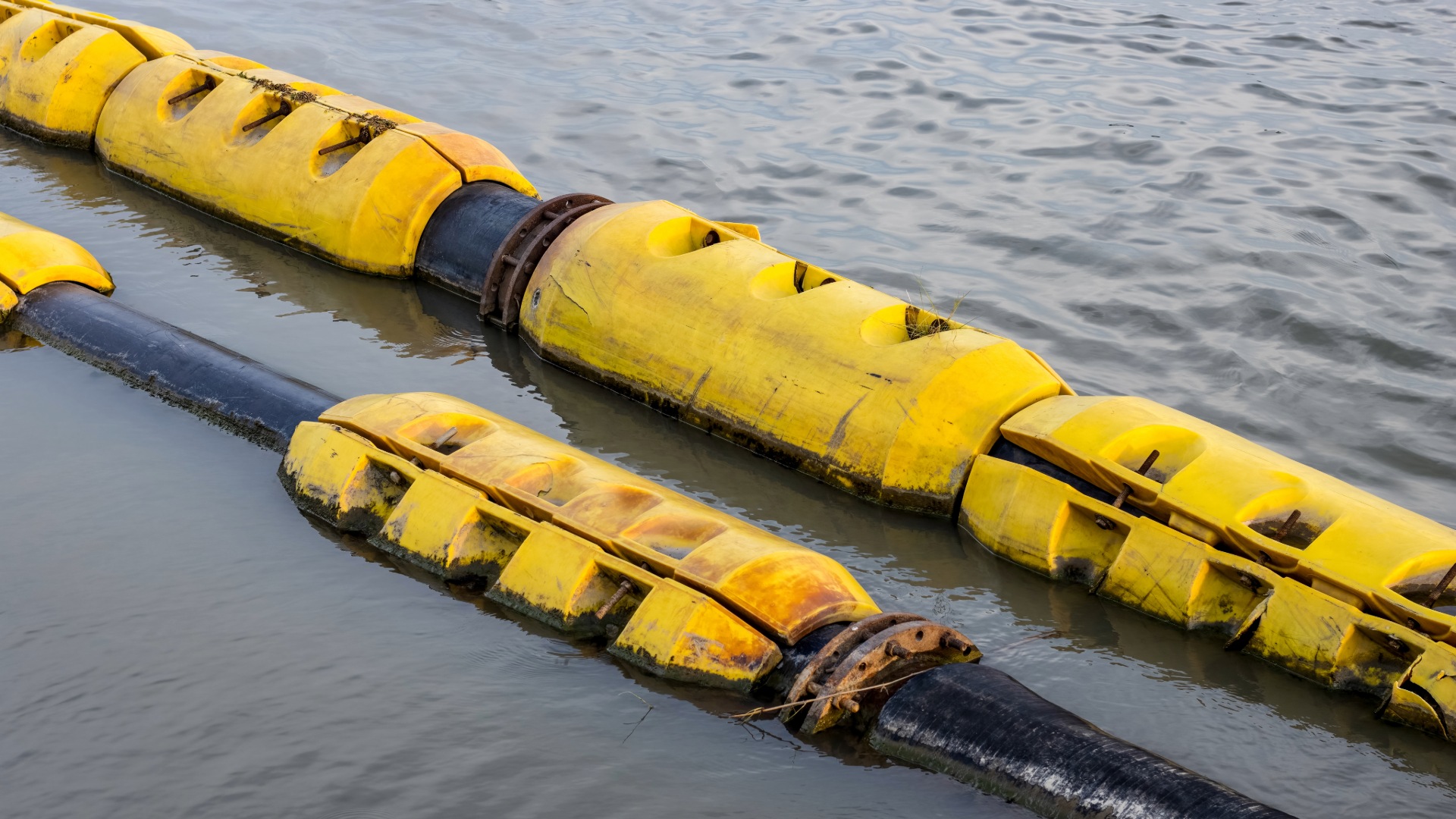
Before disconnecting any hose sections, ensure that full depressurization has been achieved. Trapped internal pressure can result in sudden, dangerous fluid discharge. Use gauges and proper drainage methods to confirm the hose is pressure-free.
When inspecting or installing hose floats or industrial hose floats, personnel must operate from stable, non-slip platforms. Floating docks and decks should be secured and equipped with safety rails when using cranes or winches to reposition floats. Certified operators and lifting tools are essential for safe operation.
Emergency preparedness is equally critical. Keep spill kits, life buoys, and communication devices easily accessible. Regular training on emergency protocols ensures everyone is equipped to respond swiftly.
By adhering to these safety measures, operators not only protect personnel but also preserve the operational reliability of marine transfer systems. Consistent and careful handling of hose components supports a longer service life and reduces the likelihood of critical failures.
Proactive Maintenance Saves Time and Cost
Floating hose systems are vital for smooth and safe marine and dredging operations. However, even the most durable setups can deteriorate without routine inspection and care. To prevent unexpected failures, it’s crucial to maintain not only the hose itself but also its supportive floatation components.
By adhering to a structured maintenance schedule, replacing worn parts in advance, and using durable materials for your floatation units, operators can maximize system performance and reduce downtime.
Proactive upkeep is the key, invest in long-lasting marine transfer systems to keep operations running without interruption.

